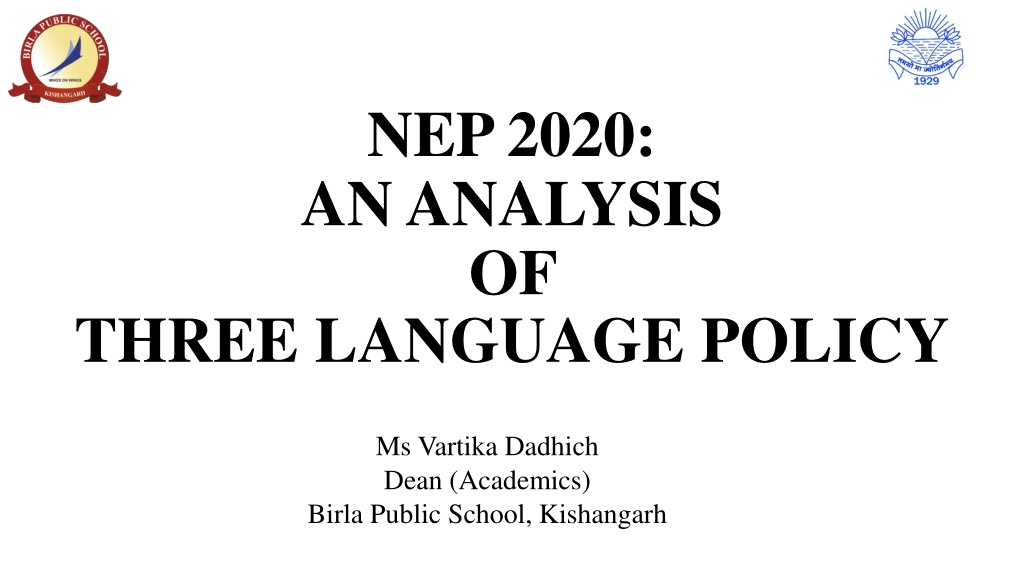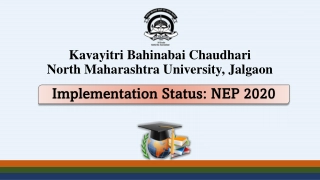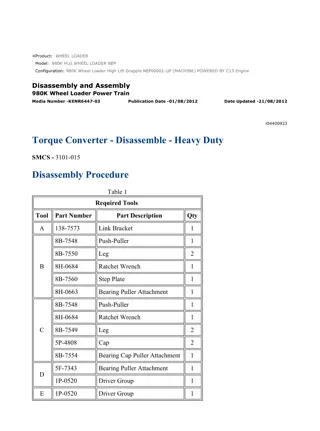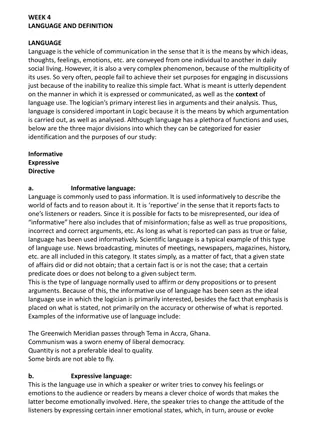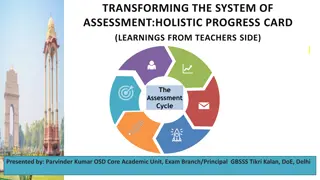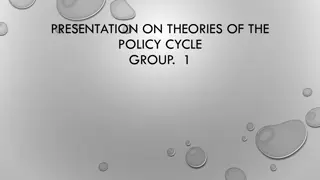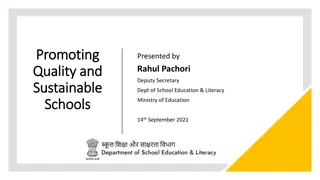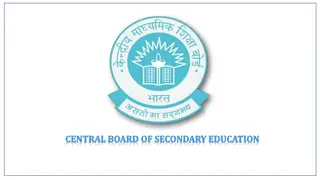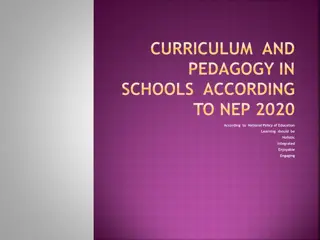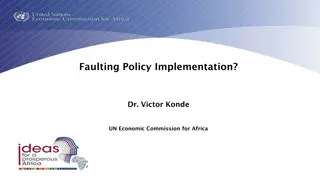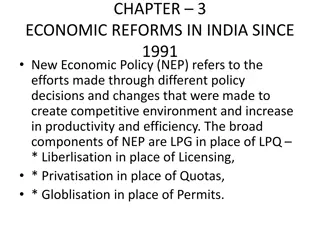Analysis of Three Language Policy in NEP 2020
The analysis of the Three Language Policy in NEP 2020 explores the aim, implementation issues, reasons for non-implementation, and possible solutions. The policy aims to encourage regional languages, promote multilingualism, and support national harmony. However, uneven implementation, preferences for dominant languages, lack of resources, and other challenges hinder its effectiveness. Potential solutions include offering freedom to choose languages and formulating unbiased policies.
Uploaded on Sep 11, 2024 | 0 Views
Download Presentation

Please find below an Image/Link to download the presentation.
The content on the website is provided AS IS for your information and personal use only. It may not be sold, licensed, or shared on other websites without obtaining consent from the author. Download presentation by click this link. If you encounter any issues during the download, it is possible that the publisher has removed the file from their server.
E N D
Presentation Transcript
NEP 2020: AN ANALYSIS OF THREE LANGUAGE POLICY Ms Vartika Dadhich Dean (Academics) Birla Public School, Kishangarh
Overview ge Formula -What is the three- language formula? -Aim of Three Language Formula - Issues in implementations - Reasons on Non- Implementation - Possible Solutions
What is the three- language formula? Language Hindi Speaking States Mother language (Hindi) Non Hindi Speaking states Mother language/Regional language Hindi or English Modern Indian Language* L1 L2 L3 English Modern Indian Language* * Modern Indian Language- Eighth schedule of the constitution of India contains a list of 22 languages recognised as scheduled language. They are Assamese, Bengali, Bodo, Dogri, Gujarati, Hindi, Kannada, Kashmiri, Konkani, Maithili, Malayalam, Meitei, Marathi, Nepali, Odia, Punjabi, Sanskrit, Santhali, Sindhi, Tamil, Urdu.
Aim of Three- Language Formula - Encourage and support regional language. - Remove inequalities which come up with respect to language. - Promote multilingualism and national harmony. - Support linguistic diversity. - Learning language is an important part of a child s cognitive development. - To cultivate national integration and inter-state communication. - Developing Hindi as a link language.
Issues in Implementations - Uneven implementation of 3 language formula. - Hindi speaking states are not keen to learn South Indian language. - Many non-Hindi speaking states learn Hindi but they find English and regional language more useful for their future. - Providing education for all children in their mother tongue is a problem in many states. - Those who come through regional language medium, find it difficult to cope with English at higher studies.
Reasons of Non- Implementations - Fear of heavy language load in school curriculum. - To opt deliberately for the dominant language that is more relevant in getting higher technical and professional education. - Duration for compulsory study of free languages varies. - Lack of adequate resources of additional language teachers and teaching material.
Possible Solutions -Give freedom to choose any 3 languages of earth schedule of the constitution or official language of India. -Formulate such a policy which is free from social political strategy. -Focus on child's requirement social cultural and linguistic growth -In Hindi speaking states South Indian language should be compulsory and for non Hindi states Hindi should be taught.
My take away from the Three Language Formula -highly positive relationship between multilingualism and greater achievements. -students academically more creative and socially more tolerant. -current need is for a clear policy to promote and utilize different languages in schools as a medium of instruction and to make knowledge in every known discipline available in all the Indian languages so as to promote every language equally.
